Project 68-bis cruisers: the backbone of the post-war fleet. Part of 1
If story designing cruisers such as the Sverdlov-type cruisers may surprise the lovers of naval history with something unusual for its unusual brevity and the absence of any intrigue. While the projects of other domestic ships constantly underwent the most bizarre metamorphosis, during which the final result was sometimes fundamentally different from the original technical specification, with the Sverdlov-type cruisers everything turned out short and clear.
As mentioned in previous articles, according to the pre-war plans, light cruisers of the 68 project were to become the main ships of this class in the Soviet Navy. Unfortunately, they could not be commissioned before the start of the war, and by the end of the war the project was to some extent outdated. After the war, it was decided to finish building these cruisers on the modernized 68K project, which provided for the installation of powerful anti-aircraft and radar weapons. As a result, the ships became much stronger, and in terms of combat qualities they exceeded the light cruisers of other military-built powers, but still had a number of flaws that could not be fixed due to the limited size of the cruisers under construction. The required nomenclature and the number of armaments, as well as technical means, were not trivially placed on them, so it was decided to complete the construction of 5 surviving ships of this type, but do not pawn the new 68K. Here began the history of the cruisers of the project 68-bis.
But before we proceed to its consideration, let us recall what happened with the domestic naval shipbuilding in the post-war years. As is known, the pre-war shipbuilding program (15 of the 23 project battleships, the same number of heavy cruisers of the 69 project, etc.) was not completed, and its renewal, due to changed conditions, did not make sense after the war.
In January, 1945, on behalf of the People's Commissar of the Navy N.G. Kuznetsova commission was formed as part of the leading specialists of the Naval Academy. They were given the task: to summarize and analyze the experience of the war at sea, and to issue recommendations on the types and performance characteristics of promising ships for the Soviet Navy. Based on the work of the commission in the summer of 1945, the Navy’s proposals on military shipbuilding for the 1946-1955 were formed. According to the presented plan, for ten years it was planned to build a 4 battleship, 6 large and as many small aircraft carriers, 10 heavy cruisers with 220-mm artillery, 30 cruisers with 180-mm artillery and 54 cruisers with 152-mm guns, and I would be in the same cases, I would be as out of the one; Xnumx submarines.
Building so grand fleet It was, of course, beyond the borders of both the industrial and financial capacities of the country. On the other hand, it was also impossible to postpone shipbuilding programs for later - the fleet emerged from the Great Patriotic War very weak. For example, the same Baltic Fleet had 2 battleships, 2 cruisers, 19 destroyers (including 2 destroyer leaders) and 65 submarines at the start of the war, and a total of 88 ships of the above classes. By the end of the war, it included 1 battleship, 2 cruisers, 13 leaders and destroyers, and 28 submarines, i.e. there are only 44 ships. Even before the war, the personnel problem was extremely acute, since the fleet received a large number of new ships, not having time to prepare for them a sufficient number of officers and midshipmen. During the war years, everything only got worse, including as a result of the departure of many sailors to land fronts. Of course, the war “raised” the generation of military commanders, but for a number of different reasons, the actions of the most powerful fleets of the USSR Navy, the Baltic and the Black Sea, were not very active, and the losses of existing forces were very high, so the personnel problem remained unresolved. Even the acceptance of trophy ships of the Axis countries, transferred to the USSR for reparations, proved to be a considerable test for the Soviet fleet - it was difficult to recruit crews for the acceptance and transfer of ships to domestic ports.
In general, the following happened: before the war, the Red Army Navy was a coastal fleet for a long time, focused on solving defensive tasks off its coast, but in the second half of the 30-s, an attempt was made to build an ocean fleet interrupted by the war. Now the fleet, having suffered significant losses, returned to its "coastal" status. Its backbone was made up of ships of pre-war projects, which could no longer be considered modern, and even very often were not in the best technical condition. And which, moreover, remains too little.
In essence, it was required (for the umpteenth time!) Once to engage in the revival of the domestic navy. And here I.V. Stalin quite unexpectedly took the position of industry, not the fleet. As is known, the decisive word remained for I.V. By Stalin. Many blame him for his voluntaristic approach to building the navy in the post-war years, but it must be admitted that his plan to build the Soviet fleet turned out to be much more reasonable and realistic than the program developed by the navy's specialists.
I.V. Stalin on the light cruiser "Molotov", 1947
I.V. Stalin remained a supporter of the ocean fleet, which he considered necessary for the USSR, but he also understood that it was pointless to start building it in 1946. Neither the industry that simply does not master such a number of ships, nor the fleet that can not accept them is ready for this, since it will not have a sufficient number of qualified crews. So he divided the construction of the fleet into the 2 stages. Between 1946 and 1955 it was necessary to build a sufficiently powerful and numerous fleet to operate at its native shores, which, in addition to the defense of the Fatherland itself, also had the function of a “forge of personnel” for the future of the ocean navy of the USSR. At the same time, during this decade, the shipbuilding industry would certainly have grown so strong that the construction of the ocean fleet was completely in the teeth, and thus the country would create all the necessary prerequisites for a breakthrough into the ocean after 1955.
Accordingly, the shipbuilding program on 1946-55. turned out to be significantly adjusted downwards: the battleships and aircraft carriers disappeared from it, the number of heavy cruisers decreased from 10 to 4 (but their main caliber had to grow from 220 to 305 mm), and the number of other cruisers was to decrease from 82 to 30 units. Instead of 358 destroyers decided to build 188, but in part of the submarines, the program has undergone minimal changes - their number was reduced from 495 to 367 units.
So, in the next 10 years, the fleet should have transferred the 30 light cruisers, of which 5 were already on the stocks and had to be completed according to the 68K project, which, despite its many advantages, did not fully satisfy the sailors. Therefore, it was proposed to develop a completely new type of cruiser, which could absorb all the new weapons and other equipment. This project received the number of 65, but it was quite clear that the work on it was delayed simply because of its novelty, and the ships were required yesterday. Accordingly, it was decided to build a limited number of “transitional” cruisers, or, if you like, “second series” of cruisers of the 68 project. It was supposed, without making cardinal adjustments to the 68 project, to slightly increase its displacement in order to ensure that all that the sailors in the light cruiser wanted to see, but that “did not fit” in the Chapaev cruiser.
At the same time, to speed up the construction of new cruisers, it was intended to make their hulls fully welded. By and large, the widespread use of welding (in the construction of the Chapaevs, it was also used, but in insignificant amounts) was to become the only large-scale innovation: the armament and equipment of new cruisers should be used exclusively by industrialized models. Of course, the rejection of the installation is much more modern weaponsbeing in various stages of development seriously reduced the combat capabilities of cruisers, but guaranteed the timeliness of their commissioning. The ships of the “second series” of the 68 project, or, as they were called later, 68-bis, were not going to be built by a large series: it was assumed that only 7 of such cruisers would be built, and later they were going to build a new, “advanced”, 65 project.
Thus, "in the first iteration," the light cruiser construction program should have included the 5 ships of the 68K project, the 7 ships of the 68-bis project, and the 18 cruisers of the 65 project. However, the 65 project was subsequently abandoned: the fact is that despite the large number of very different options, the designers did not manage to design a ship that would have such a tangible superiority over the 68-bis light cruisers, so that it would make sense to change the used industry project. Thus, in the final version of the program in the period 1946-55. 5 cruisers of the 68K project and 25 cruisers of the 68-bis project were to be transferred to the XNUMX fleet.
Interestingly, a similar approach was adopted during the construction of the post-war squadron destroyers of the 30-bis project: the old, industry-developed weapons and mechanisms with the "addition" of modern radar and SLA. On this occasion, again, there is an opinion about the voluntarism of V.I. Stalin, who supported the industry and deprived the destroyers of modern weapons. Suffice it to say that the main caliber of them were two non-universal 130-mm B-2LM tower pre-war designs!
Of course, it would be nice to see the main caliber on domestic destroyers capable of effectively “working” on aircraft like the CM-2-1, and on light cruisers of the Sverdlov type - the universal 152-mm units described by A. B. Shirokorad in the monograph "Light cruisers like" Sverdlov ":
One would also welcome the deployment of fully automatic 100-mm cannons on cruisers. The CM-5-1 turrets still included manual operations, which made their firing rate (per barrel) not exceeding 15-18 bpm / min, while with the fully automatic CM-52 this figure should have been 40 b / min. Yes, and 37-mm B-11 with their manual guidance in the 50-ies already looked weird, especially since you could try to equip ships with more powerful and much more sophisticated 45-mm guns. And the Sverdlov-type cruisers could get a more modern power plant with the development of a pair of higher parameters, equipment with alternating current and so on and so forth ...
Alas, not received. And all because, for once, the restoration of the national fleet went the right way. Since the ships were needed “here and now”, quite large series of cruisers and destroyers are being laid, equipped, though not the most modern, but with a good reputation and reliable “stuffing” and at the same time - the development of “ships of the future” in which customers - mariners and constructors-performers are not limited to anything. For example, the destroyers of the 41 project, the TTZ for which was issued by the fleet in June 1947. The ship had all that many analysts thought was missing from the destroyers of the 30-bis project: universal artillery, 45-mm automatic, modern power plant ... But here's the bad luck: according to the results of tests that began in 1952, the destroyer was declared unsuccessful and did not go into the series. The question is: how many ships would the fleet get in the first half of the 50-s if, instead of the 30-bis project, we were to deal exclusively with an ultra-modern destroyer? And so in the period from 1949 to 1952. The 67 destroyers of the 30-bis project from the 70 ships of this series got into operation. And the same can be said about cruisers - one could, of course, try to radically upgrade the armament of Sverdlov-type cruisers or even abandon the construction of 68-bis ships in favor of the newest 65 project. But then, most likely, until the very 1955 g, the fleet would have received only 5 cruisers of the 68K project - the newest cruisers would probably be “stuck” on the stocks, because all of their “stuffing” would be new and not mastered by industry, and only chronic delays in the development of new weapons better and not to remember. The same automatic 100-mm CM-52 only for factory tests was released only in 1957, i.e. two years after the fourteenth cruiser of the project 68-bis!
Light cruiser "Admiral Ushakov" before descent, 1952
As a result of the abandonment of "projects that have no analogues in the world", the fleet in the first post-war decade received 80 destroyers of 30K and 30 bis projects (20 for each fleet) and 19 light cruisers (5 - 68K and 14 - 68 bis), and taking into account six ships of the Kirov and Maxim Gorky type, the total number of light cruisers of domestic construction in the USSR Navy reached 25. In fact, as a result of “voluntaristic decisions, I.V. Stalin, who did not want to listen to either sailors or common sense, the USSR Navy received a squadron at each theater, powerful enough to operate near its shores, under cover aviation land based. It became the very forge of personnel without which the creation of a domestic ocean fleet in the 70s would have been simply impossible.
You can hold interesting parallels with today, it is terrible to remember that in a row, the revival of the domestic fleet. In the twentieth century, we restored the fleet three times: after the Russian-Japanese war, then after the First World War and the civil war that followed it, and, of course, after the Second World War. In the second case, a bet was made on the “unparalleled in the world” ships: the firstborn shipbuilding programs were the URAN type SKR with many technological innovations, such as new high-speed turbines not used before, the 1 project leaders with excellent tactical and technical characteristics ... And what is the result? The head cargo ship "Uragan", ship less than 500 tons of displacement was built from August 1927 to August 1930 g, and was conditionally accepted by the fleet in December 1930 g - 41 passed from the moment of laying the month! For 15 years before the events described, the creation of the battleship "Empress Maria", a giant weighing 23 413 t, took only 38 months from the moment of the beginning of construction to the entry into service. The leader of the destroyers "Leningrad" laid 5 November 1932 g., He formally joined the Red Banner Baltic Fleet 5 December 1936 g (49 months) but actually finished building afloat until July 1938 year! At this time, the first destroyers of the type 7, laid down in the 1935, just started their tests ...
And compare it with the post-war recovery of the Navy. As we said earlier, even the cruisers of the 68K project turned out to be quite at the level of the modern foreign ships and in general corresponded to the tasks facing them, but the light cruisers of the Sverdlov type were better than the 68Ks. Of course, the cruisers of the 68-bis project did not become a military-technical revolution in comparison with the Chapayevs, but the construction methods turned out to be the most revolutionary ones. We have already mentioned that their hulls were made completely welded, while using low-alloyed steel SHL-4, which significantly reduced the cost of construction, and the tests showed no damage to the strength of the hulls. The building was formed from planar and volumetric sections, formed taking into account the technological features of the workshops and their crane facilities (this, of course, is not yet a block construction, but ...). During the construction used a new, so-called. pyramidal, method: the whole construction process was divided into technological stages and construction kits (apparently, it was a certain analogue of network schedules). The result - huge ships, over 13 thousand tons of standard displacement, being built in an unprecedented series for the Russian Empire and the USSR at four shipyards in the country, were built on average for three years, and sometimes even less: for example, the Sverdlov was laid October 1949 r, and 1952 r (34 mon.) was commissioned in August. Long-term construction cases were extremely rare, for example, “Mikhail Kutuzov” was built almost 4 of the year, from February 1951 to January 1955.
Nevertheless, in the 21st century, we chose precisely the pre-war model of fleet restoration, based on the creation of “unparalleled in the world” ships. Bottom line: the 1, laid down by the 2006 in February, the frigate "Admiral of the Fleet of the Soviet Union Gorshkov" in 2016 (for more than ten years) was still not part of the Russian Navy. The nineteen cruisers of the Stalin era, built in the first decade after the worst war in the history of our people, will forever remain a silent reproach to us today ... If we instead of relying on the latest weapons, would have built the Gorshkov as an experimental ship mass construction and even the same frigates of the 11356 project, today we could have on each fleet (and not only on the Black Sea) 3, and perhaps the 4 are quite modern and equipped with quite formidable weapons of the frigate first built, and all the same, "Gorshkov", waiting for the complex "Poliment-Redoute." In this case, we would not have to send “Buy-M” class river-to-sea ships to Syrian coast, the shipbuilding industry would receive a powerful push forward, the fleet would still have the same “forge of personnel” and adequate ships to demonstrate the flag ... Alas as the sad saying goes: "The only lesson of history is that people do not remember its lessons."
But let us return to the history of the creation of Sverdlov-type cruisers. Since the new cruiser was, in effect, an enlarged and slightly corrected version of the previous 68K, it was considered possible to omit the stage of preliminary design, going straight to the technical design. The development of the latter began immediately after the issuance and on the basis of the Navy's assignment submitted by the USSR Council of Ministers in September 1946. Of course, the work was led by TsKB-17 - the creator of the Chapaev-type cruisers. There were not too many differences between 68-bis and 68K.
But still they were. In terms of armament, the main caliber remained almost the same: the 4 three-gun 152-mm turret MK-5-bis corresponded almost entirely to the MK-5 mounted on Chapaev type ships. But there was one fundamental difference - the MK-5-bis could be induced remotely from the central artillery post. In addition, cruisers of the 68-bis project received two radar fire control systems for the main caliber "Volley", and not one, as ships of the 68K project. The Sverdlovs anti-aircraft artillery consisted of the same paired 100-mm SM-5-1 and 37-mm B-11 automatic rifles, as on Chapaevs, but their number increased by two installations of each type.
Installing the B-11 on the Admiral Ushakov light cruiser
The number of stabilized posts remained the same - 2 units, but Sverdlov received more advanced SPN-500, instead of SPN-200 of the project 68К. For anti-aircraft fire were responsible PUS "Zenit-68-bis." Interestingly, during their service, the 68-bis cruiser actively practiced firing the main caliber at air targets (using the curtain method). The very powerful X-NUMX-mm gun B-152, capable of firing at a distance of up to 38 kbt, combined with the absence of an air defense system for collective self-defense in the 168,8-50-ies, "pushed" to such a decision. Accordingly, armed with the main caliber of the 60-bis cruisers of the project (as, incidentally, 68K) received ZS-68 distance grenades containing 35 kg of explosives. According to unconfirmed reports, there were also projectiles with radio-explosives (inaccurately). Theoretically, the Zenit-6,2-bis system could be engaged in managing the fire of the main caliber; however, according to the available data, it was practically impossible to organize firing under the control of the STS data, therefore the fire was fired according to the firing tables.
Both torpedo tubes returned to the 68-bis cruiser, and now they were not three-but five-tube ones. However, the Sverdlovs quickly lost them. The cruisers were too large to participate in torpedo attacks, and the ubiquitous development of radar did not leave room for night torpedo fights like those for which the pre-war imperial fleet of Japan was preparing. Aircraft armament on cruisers was not originally intended. As for radar weapons, it largely corresponded to the ships of the 68K project, but not because the designers did not invent anything new, but, on the contrary, as newer radar facilities installed on the Sverdlov appeared, they also equipped Chapaev cruisers .
At the time of commissioning of the cruiser Sverdlov, he had a Reef radar to detect surface targets and low-flying aircraft, Huyus-2 radar to control the airspace, 2 Radar, Zalp and 2 - Shtag-B for fire control the main caliber, 2 Radar "Anchor" and 6 Radar "Shtag-B" to control the fire of anti-aircraft guns, radar "Dawn" to control torpedo firing, as well as identification equipment, including 2 interrogator device "Torch M3" and the same response devices "Torch-MO". In addition, the cruiser, as well as ships of the Chapaev type, was equipped with the Tamir-5H GAS capable of detecting not only submarines, but also anchor mines.
In the future, the nomenclature of radar and other target detection systems has expanded considerably: cruisers received more modern radars of general overview of surface and air targets, such as П-8, П-10, П-12, "Kactus", "Kiel", "Klever" and etc. But of particular interest, perhaps, are the means of electronic warfare. The installation of these facilities on cruisers was provided for by the initial project, but by the time they were commissioned, they could not be developed, although space on ships was reserved. The first copy (radar "Coral") passed state tests in 1954, then in 1956 g on "Dzerzhinsky" experienced a more "advanced" model "Crab", but also she did not suit the sailors. Only in 1961, the Krab-11 radar passed state tests and was installed on the Dzerzhinsky cruiser, and some time later 9 cruisers of the 68-bis project received an improved model of the Krab-12. The exact CTR-12 performance characteristics are unknown to the author of this article, but the original model, the Crab, provided protection against the Zarya radar at a distance of 10 km, the Anchor radar - 25 km, and the Zalp radar - 25 km. Apparently, the Crab-12 could well mislead enemy artillery radars at long distances, and one can only regret that cruisers had such opportunities only in 60-s.
Of no less interest is the Sun-1 heat transfer station (TPS), which is an optoelectronic device designed for covert detection, tracking and identification of bearing targets at night. This station detected the cruiser at a distance of 16 km, the destroyer - 10 km, the accuracy of determining the bearing - 0,2 deg. Of course, the capabilities of the “Sun-1” TPS were much lower than that of the radar stations, but it had a great advantage - unlike the radar, the station did not have active radiation, so it was impossible to detect it during operation.
Booking cruisers 68-bis almost completely repeated that of the cruisers of the project 68K.
The only difference from the Chapaev-type cruisers was the increased booking of the tiller compartment - instead of 30 mm armor, it received 100 mm vertical and 50 mm horizontal protection.
The power plant also corresponded to the cruisers of the project 68-K. The Sverdlovs were heavier, so their speed was lower, but only slightly - 0,17 knots at full and 0,38 knots when forcing boilers. At the same time, the speed of the operational and economic progress was even half a knot higher. (18,7 vs. 18,2 knots).
One of the most important tasks in the design of Sverdlov-type cruisers was a more comfortable crew accommodation than was achieved on the 68K cruisers, which instead of 742 people had to place 1184 people in the pre-war project. But here, unfortunately, domestic designers were defeated. Initially, the cruisers of the 68-bis project were planned for 1270 people, but they also did not avoid the increase in crew numbers, which eventually exceeded the 1500 people. Unfortunately, their habitat conditions were not too different from Chapaev-type cruisers:
Kubrick crew on the cruiser "Sverdlov"
It is extremely difficult to compare cruisers of the 68-bis project with foreign analogues due to the almost complete absence of analogues. But I would like to note the following: for a long time it was believed that domestic cruisers were significantly inferior not to the “Worchester”, but even to light cruisers of the “Cleveland” type. Probably, the first such assessment was made by V. Kuzin and V. Nikolsky in their work “Navy of the USSR 1945 — 1991”:
In no case do you need to reproach respected authors for the insufficient depth of analysis or worship of Western technology. The only problem was that the American press greatly exaggerated the performance characteristics of its ships, including the Cleveland light cruisers. Thus, in terms of protection, they were assigned an extremely powerful 76-mm armored decks, and an 127-mm belt without indicating the length and height of the citadel. What other conclusion, based on the data they have, could have been made by V. Kuzin and V. Nikolsky, except for this: “68-bis was booked worse than 1,5?” Of course, none.
But today we know very well that the thickness of the armored forms of the Cleveland-type cruisers did not exceed 51 mm, and a significant part of it was below the waterline, and the armor belt, although it reached 127-mm thickness, was more than twice as short and 1,22 lower than than the Sverdlov-type cruisers. In addition, it is unknown whether this bronepoyas uniform in thickness, or, like the previous light cruisers of the type "Brooklyn", he thinned to the lower edge. In view of the foregoing, it should be recognized that the light cruisers 68K and 68-bis were protected much better and more rationally than American cruisers. That, combined with the superiority of the domestic 152-mm B-38 cannon in everything except for the rate of fire over the American Mark 16, gives the Soviet cruisers of the Sverdlov project an obvious superiority in battle.
The statements of V. Kuzin and V. Nikolsky about the absence of fire control systems capable of ensuring the destruction of targets at extreme distances are possible, and true, since we do not have examples of firing Soviet cruisers at a distance over 30 km at a naval target. But, as we know, the ships confidently hit the target at distances of the order of 130 kb. At the same time, as A. B. Wide Food:
The effective firing range of the domestic B-38, calculated according to the “A. Shirokorada "is 126 KBT. It is confirmed by the practical shooting of the 68 project cruisers of 28 held on October 1958: controlling the fire exclusively by radar data, at night and at speeds above 28 nodes in three minutes, three hits were reached from a distance that changed during shooting from 131 KB to 117 KB. Taking into account the fact that the Cleveland cannon’s maximum range did not exceed 129 kb, its effective firing distance is about 97 kb, but this distance still needs to be reached, and this will be difficult given the fact that the American cruiser does not exceed the Soviet cruiser. And the same is true for light cruisers like the Worcester. The latter, of course, is booked better than Cleveland, although even here there are some doubts about the reliability of its performance characteristics. Nevertheless, his guns in firing range do not exceed the Cleveland cannon, which means that for any American light cruiser there will be a distance from 100 to 130 kbt, on which Soviet cruisers 68K and 68-bis can surely hit "American "While the latter will not have such opportunities. And for the “Worchester” the situation is even worse than for the “Cleveland”, since this light cruiser did not carry specialized KDP to control the fire of the main caliber in combat with surface ships. Instead, 4 directors were installed, similar to those who controlled 127-mm universal artillery on other US ships — this solution improved the ability to fire at aerial targets, but targeting enemy ships at large distances was difficult.
Of course, the 100-130 KBT 152-mm projectile is unlikely to be able to penetrate the armored deck or the stronghold of Cleveland or Worchester, yet the possibilities of even the best six-inch drives at such distances are small. But, as we know, already at the end of the war, fire control systems were of paramount importance for firing accuracy, and the radars of American fire control directors were completely unable to withstand the fragments of Soviet 55-kg high-explosive shells and therefore the superiority of Soviet ships at long distances was of paramount importance.
Of course, the likelihood of a one-on-one artillery duel between Soviet and American cruisers was relatively small. Yet the value of a combat ship is determined by its ability to solve the tasks for which it was intended. Therefore, in the next (and last) article of the cycle, we will not only compare the capabilities of the Soviet ships with the “last of the Mohicans” of Western artillery cruiser building (the British Tiger, the Swedish Tre Krunur and the Dutch De Zeven Provinsen), but also consider the role and the place of domestic artillery cruisers in the concepts of the USSR Navy, as well as some little-known details of the operation of their main caliber artillery.
To be continued ...
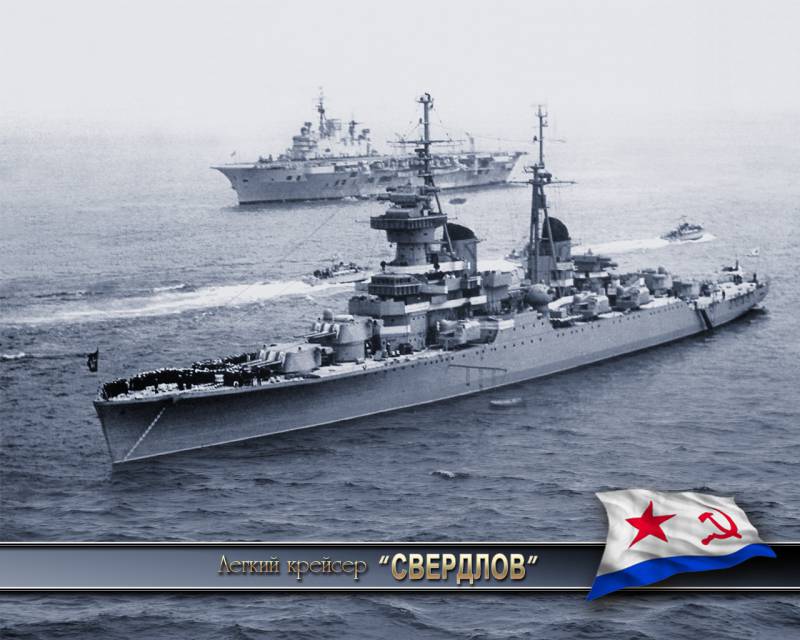
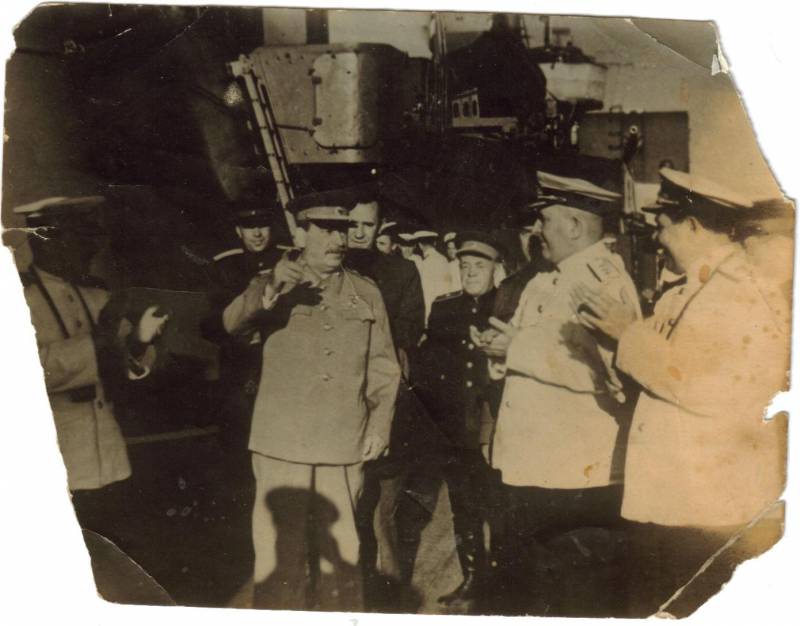
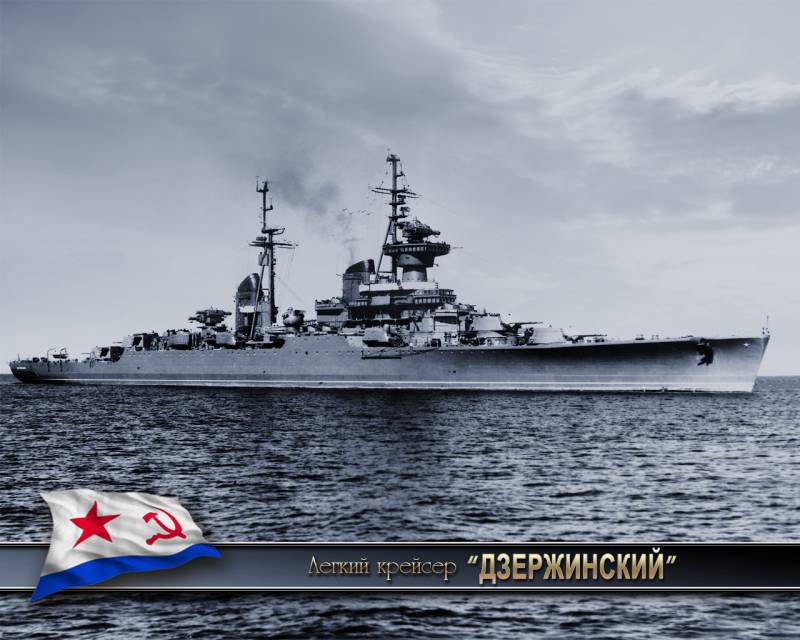

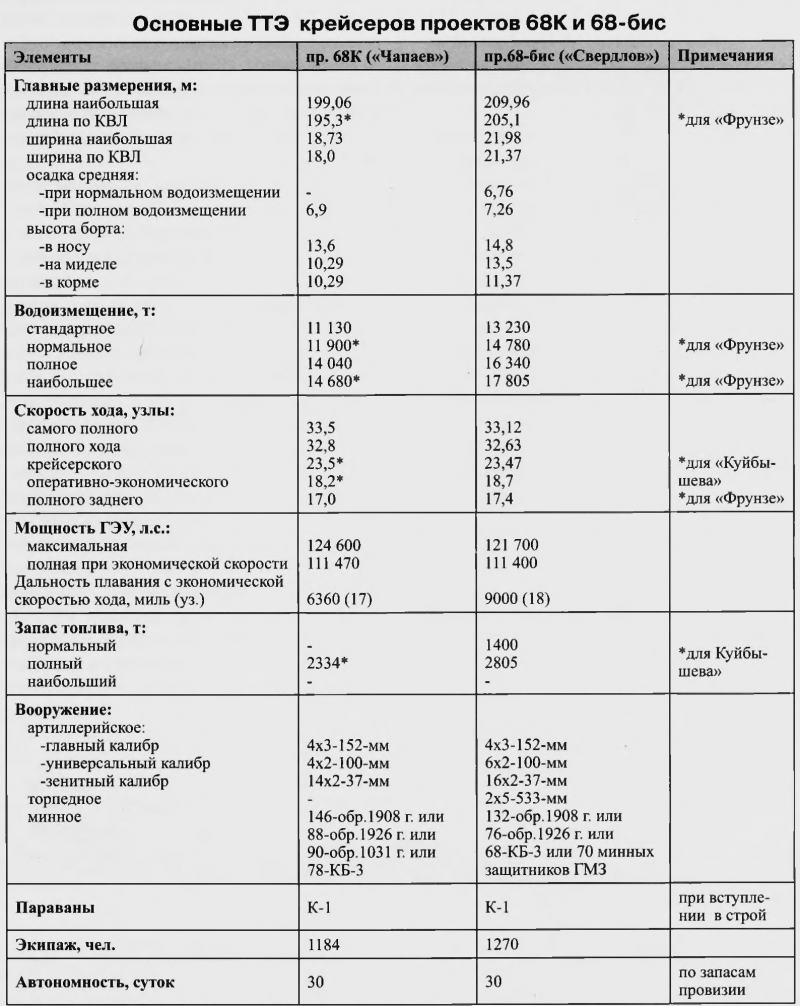
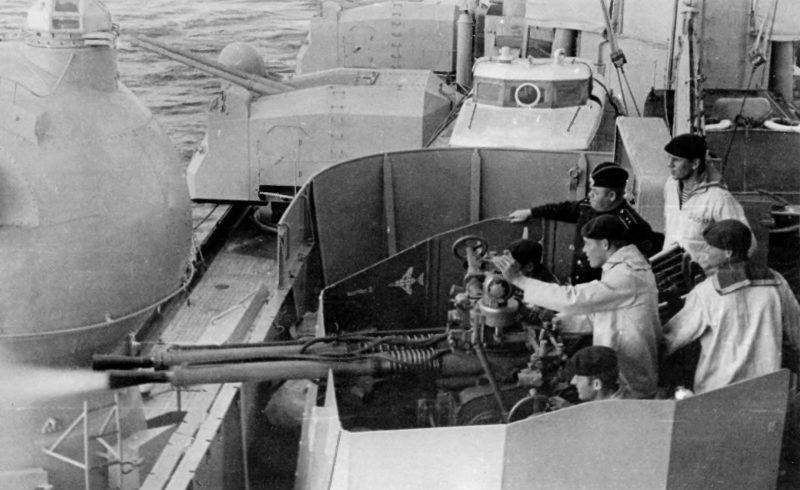

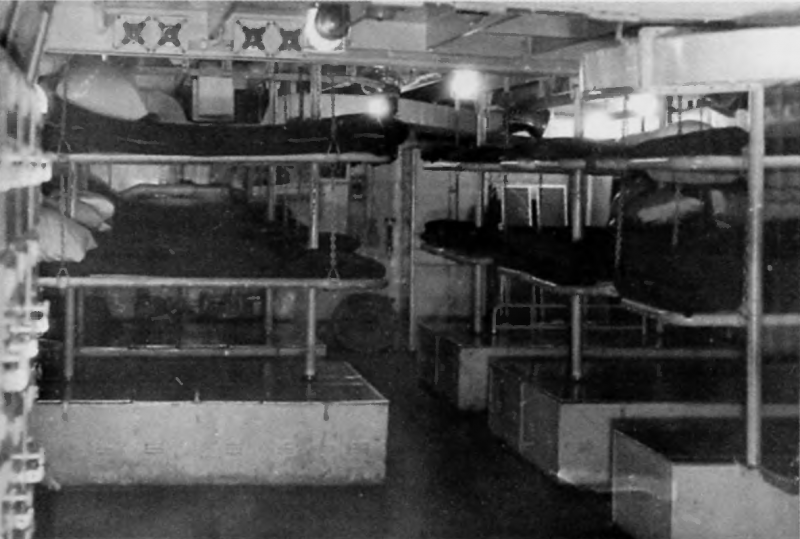
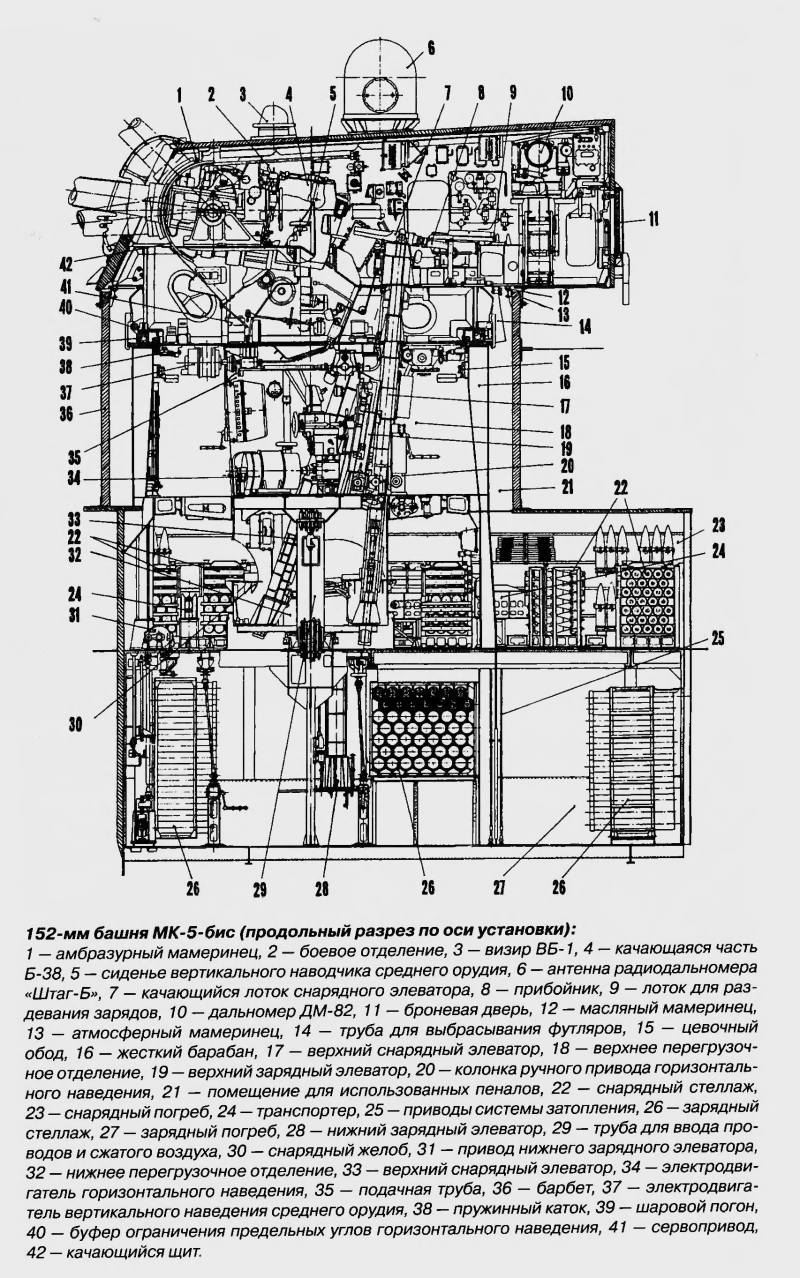
Information